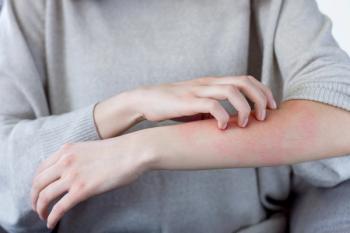
Combined Oral and Phototherapy Treatments Show Promise in Treating Severe Vitiligo
In a phase 2 clinical trial, researchers examined baricitinib and NB-UVB in adults with severe vitiligo in the dermatology departments at 4 hospitals in France between July 2021 and April 2023.
Combining baricitinib with narrowband UV-B therapy could be an effective treatment for those with severe, active vitiligo, according to a new study published today in JAMA Dermatology.
Vitiligo is a long-term autoimmune condition that causes patches of skin to lose color. The disease is caused when the immune system attacks melanocytes, the cells responsible for skin color, due to high levels of immune chemicals like interferon-gamma and interleukin-13.
It affects 0.5% to 2% of people worldwide and can greatly impact mental health and quality of life. Without treatment, new patches can appear quickly, especially in severe cases, requiring stronger medications.
Medications such as JAK inhibitors stop the immune system from attacking melanocytes. Ruxolitinib is a JAK inhibitor cream used for small areas of vitiligo, though, isn’t very effective for larger areas.
However, Baricitinib, a pill that works throughout the body, has the potential to work better for those with widespread vitiligo.
In addition, narrowband UV-B (NB-UVB) phototherapy is a common vitiligo treatment that reduces inflammation and helps color-producing cells regrow.
Researchers believe combining NB-UVB with JAK inhibitors could improve results.
In a phase 2 clinical trial, researchers tested this idea by studying baricitinib and NB-UVB in adults with severe vitiligo in the dermatology departments at 4 hospitals in France between July 2021 and April 2023.
Of the 49 participants (71% female, average age 49.9), they were randomly assigned to take either baricitinib (4 mg/day) or a placebo for 36 weeks. For the first 12 weeks, they only took the medication. For the next 24 weeks, they added NB-UVB therapy twice a week.
Participants had vitiligo affecting more than 5% of their body and signs of recent disease activity. Researchers used tools such as the Vitiligo Area Scoring Index (VASI) to measure progress.
At week 36, participants in the baricitinib group had a 44.8% reduction in VASI scores compared to 9.2% in the placebo group. While this didn’t significantly exceed the target improvement of 42.9%, further research displayed benefits of combining baricitinib with NB-UVB therapy.
Baricitinib also improved disease control and quality of life, with no major differences in side effects compared to the placebo.
Regardless of limitations including the small sample size, the findings support further research in larger phase 3 trials to confirm these results and assess long-term safety, according to researchers.
Newsletter
Get the latest industry news, event updates, and more from Managed healthcare Executive.

















































